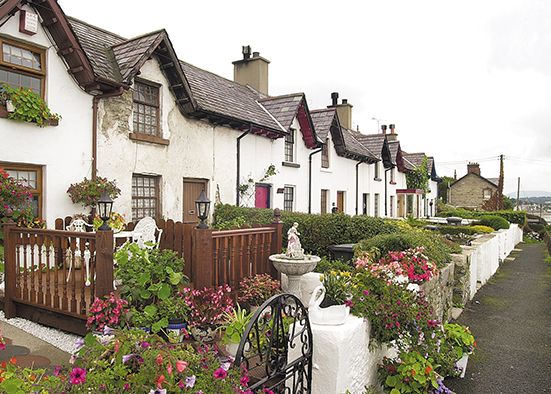The coastal community in King Street faced great hardship even before the disaster and slid into serious poverty afterwards. This was made worse as the years of the Irish Famine approached from around 1845 to 1847
The coastal community in King Street faced great hardship even before the disaster and slid into serious poverty afterwards. This was made worse as the years of the Irish Famine approached from around 1845 to 1847
10 January 2024

SEVENTY-THREE men who lost their lives in the 1843 fishing disaster a few miles off Newcastle will be remembered at a special event this weekend.
The Newcastle Harbour Heritage Association is organising a commemoration for those who perished on the fateful night of Friday, January 13, and others who lost their lives along the local coastline.
The men who lost their lives in an unexpected and severe storm were from Newcastle, Annalong and wider Mourne area.
They were fishing for herring in 16 vessels which got caught up in the storm which engulfed them as they made their way to the fishing grounds off the coast.
A number of the vessels capsized, drowning those on board, while several boats rowed out from Newcastle and Annalong to mount a rescue mission.
Those who perished left behind 27 widows and almost 100 dependent children.
Shortly after the tragedy, a public subion was established to provide a relief fund to assist these families, with the Widows Row cottages built in Newcastle to house some of the widows and their children.
Last year, a plaque was unveiled at Newcastle harbour to commemorate the 180th anniversary of what is regarded as one of Ireland’s worst maritime disasters.
Ahead of Saturday night’s event which starts at 7.30pm at the Generator House, Mournes councillor Willie Clarke has paid tribute to the Harbour Heritage Association for organising the commemoration to remember those who died while carving out a living at sea.
Last year, Cllr Clarke proposed that Newry, Mourne and Down Council should provide a memorial garden in memory of those who lost their lives in the tragedy. He is concerned that little progress has been made.
He is keen for the local authority to work with the Harbour Heritage Association and local community to identify funding sources and agree the location for a memorial.
Ahead of this weekend’s event, Cllr Clarke said he was “disappointed” at the delay in implementing his proposal “to provide a fitting memorial” to those who died in the tragedy which secured across-the-board political support.
He is keen for the council and harbour group to work in tandem to create a memorial garden at the harbour area to remember those who died in 1843 and other tragedies along the coastline.
Cllr Clarke confirmed he plans to meet with local authority officials to progress the issue and said a permanent structure in recognition of the tremendous loss to the local community is required to allow the relatives of those to tell their story of at the harbour.
“This was a terrible tragedy,” he said. “Sixteen fishing skiffs with crews of around six men rowed to their fishing grounds in the Irish Sea on Friday, January 13, 1843.
“The weather conditions were good and that morning they went further out than normal, some seven miles into the channel.
“Suddenly, a snow storm arose quickly when the wind direction changed and the sea became very rough. Many of the boats were swamped as they had already taken on board a good catch of fish which added to the extreme danger they faced. Desperately, the men men tried to row back to safety through hurricane conditions.”
Cllr Clarke said only two boats, the Victoria and the Brothers, survived the storm and got back to port.
“Of the 73 men who perished, 46 were from King Street in Newcastle, while one of the skiffs managed to get shelter in Killough harbour,” he said.
“This tragic event left the small tight-knit fishing community with two thirds of its men-folk wiped out. The disaster left 27 widows, with 14 being heads of families and around 118 children left fatherless.”
Cllr Clarke also revealed that the Watch House at the harbour was used as a temporary morgue, and that even to this day, there is a great attachment to the building from local people in the harbour area.
He said the cottages built for the wives and their children who were impacted most by the disaster were known as the Widows Row.
“The coastal community in King Street faced great hardship even before the disaster and slid into serious poverty afterwards. This was made worse as the years of the Irish Famine approached during 1845 to 1847.
“I grew up in the Widows Row as as a child and learned that it took seven years before the homes were finally completed for the benefit of the families, housed in the 12 cottages.”


